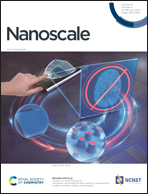Recent progress in biosensor regeneration techniques
Abstract
Biosensors are widely used in various applications, from medical diagnostics to environmental monitoring. Their widespread and continuous use necessitates regeneration methods to ensure cost-effectiveness and sustainability. In the realm of advancing human-centric bioelectronics for continuous monitoring, employing these sensors for real-time, in situ detection of biomarkers presents a considerable challenge. This mini-review examines diverse strategies utilized for the regeneration of biosensors, categorizing them based on their underlying mechanisms and discussing representative works. We explore methods ranging from surface engineering/re-functionalization, chemical treatments, allosteric regulation of bioreceptors, to manipulations of electric/magnetic fields, highlighting their working principles and exemplary studies. The advantages of each method, such as simplicity, high regeneration efficiency, and versatility, are discussed alongside their challenges, including degradation over cycles, limited applicability, and potential damage to sensors. As the demand for continuous and real-time biosensing escalates, the development of efficient and reliable regeneration strategies becomes essential. This mini-review offers an overview of the current landscape of biosensor regeneration, aiming to guide future research and innovations in this area.

- This article is part of the themed collections: Recent Review Articles and Nanoscale 2024 Emerging Investigators


 Please wait while we load your content...
Please wait while we load your content...